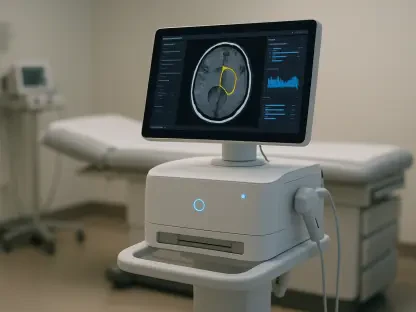LifeMD, Inc., a Nasdaq-listed provider of virtual primary care services, has announced a significant expansion in accepting Medicare insurance. This initiative will initially extend coverage to over 21 million Medicare Part B beneficiaries across 26 states, with a goal to reach more than 60 million beneficiaries in 49 states by the end of the second quarter. LifeMD aims to make medically necessary virtual primary care services, including weight management programs, more accessible to older Americans who often struggle to receive timely, preventive care, especially in rural or underserved areas.
Bridging Accessibility Gaps in Medicare Coverage
Extending Care to Rural and Underserved Areas
The strategic expansion aims to address the accessibility challenges faced by a significant portion of the Medicare population. Many beneficiaries, especially those residing in rural or underserved areas, find it difficult to access timely and preventive healthcare services. LifeMD’s direct-to-patient virtual care platform and extensive provider network, which spans all 50 states, uniquely position the company to improve healthcare outcomes for these individuals. Approximately 75% of Medicare beneficiaries manage conditions such as obesity, type 2 diabetes, hypertension, or high cholesterol. This highlights the critical need for accessible healthcare services that LifeMD’s virtual platform can provide.
Furthermore, virtual care offers an essential solution in eliminating geographical barriers that prevent many older adults from obtaining necessary healthcare. For those living in remote areas, traveling long distances to see a healthcare provider is often impractical and, in certain cases, impossible. By delivering healthcare services directly to patients’ homes, LifeMD ensures that more seniors receive the care they need without the added burden of travel. This convenience contributes significantly to better health management and adherence to treatment plans, ensuring that chronic conditions are monitored and maintained effectively.
Leveraging Legislative Support for Telehealth
LifeMD’s initiative aligns well with recent legislative actions that have extended Medicare Telehealth Flexibilities through September 30. This extension allows Medicare beneficiaries to continue receiving telehealth services from various locations, including their homes. The legislative move has garnered bipartisan support, reinforcing the potential for a more permanent solution to retain all telehealth provisions. Such legislative backing ensures that virtual care can continue to play a pivotal role in the healthcare system, providing consistent and reliable medical services to those who need them most.
The legislative support for telehealth extends beyond just the provision of services; it also emphasizes the importance of maintaining regulatory flexibility to adapt to evolving healthcare needs. This flexibility allows for continuous improvement and customization of telehealth services to meet the specific requirements of Medicare beneficiaries. It also encourages innovation within the sector, prompting healthcare providers to develop new and more effective ways of delivering virtual care, thus enhancing overall care quality and patient satisfaction.
Challenges and Potential Solutions in Telehealth
Addressing Coverage Limitations for Specific Treatments
Despite these advancements, certain treatments under Medicare Part D, such as GLP-1 medications, still face coverage limitations. Currently, these medications are generally covered only for patients with specific cardiovascular conditions. However, there is strong bipartisan support for expanding Medicare and Medicaid coverage to include these life-saving medications. This potential expansion could profoundly impact the management of chronic conditions for many Medicare beneficiaries, providing them access to essential treatments that are currently out of reach.
Additionally, addressing these coverage limitations requires ongoing advocacy and policy adjustments to ensure that all necessary treatments are accessible to Medicare beneficiaries. By working closely with lawmakers, healthcare providers, and advocacy groups, it is possible to create more inclusive policies that recognize the diverse medical needs of the aging population. This collaborative effort would help eliminate barriers to treatment and contribute to more equitable healthcare outcomes across different patient demographics.
The Role of Virtual Care in Improving Health Outcomes
Overall, LifeMD’s expansion reflects a broader trend toward increasing telehealth accessibility and addressing the healthcare needs of Medicare beneficiaries, particularly those struggling with chronic health conditions. This development highlights the importance of virtual care platforms in bridging healthcare gaps for vulnerable populations, with the potential to significantly improve health outcomes and access to care for older adults nationwide. Virtual care not only makes healthcare more accessible but also enhances the efficiency and effectiveness of medical services, ensuring patients receive timely, personalized care tailored to their specific conditions.
Moreover, the integration of virtual care into the mainstream healthcare system represents a critical step towards a more resilient and adaptive healthcare framework. The advantages of virtual care extend beyond immediate medical needs, encompassing long-term health monitoring, preventive care, and continuous patient engagement. As the healthcare landscape evolves, embracing virtual care solutions enables a more responsive and patient-centric approach, capable of meeting the growing demands of an aging population.
Future Considerations and Next Steps
LifeMD, Inc., a company listed on Nasdaq and known for its virtual primary care services, has unveiled a noteworthy expansion in its acceptance of Medicare insurance. This phased rollout will initially provide coverage to over 21 million Medicare Part B beneficiaries across 26 states. The company’s ambitious plan aims to extend its reach to more than 60 million beneficiaries in 49 states by the close of the second quarter. LifeMD’s objective is to improve accessibility to medically necessary virtual primary care services for older Americans, including those in need of weight management programs. This is particularly crucial for older adults who often find it challenging to obtain timely and preventive healthcare, notably in rural or underserved regions. By broadening its Medicare acceptance, LifeMD endeavors to ensure that more seniors have improved access to essential medical care, thus promoting better health outcomes and enhancing their quality of life.









